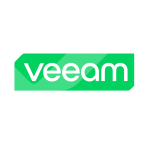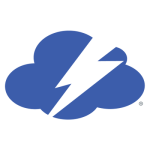What is our primary use case?
We provide solutions related to VMware, Docker, and Kubernetes for banking data centers.
We use this product to monitor virtualization infrastructure and different resources that we use in our project. We implement vROps into data centers that are working together to develop vROps solutions with different interfaces. One of them is Dell EMC Adapter which is added to vROps to monitor and collect various logs related to Dell EMC storage. We also add another plugin to monitor HP.
We host around 1,200 to 1,300 virtual machines. Our data centers have more than 50 physical servers.
How has it helped my organization?
Before using vROps, we used SolarWinds and ManageEngine, as well as Cisco NCM, to monitor different resources in our infrastructure. But we established a new project for customers and unified all the monitoring solutions in just one platform, vROps. vROps helps us to predict many issues and problems that we may face in the future. It helps us to optimize many configurations because we have good visibility into resource usage.
Because we can predict many issues and problems, we can solve them and provide options for our customers to change configurations and optimize their environments. We are able to fix problems in advance. That helps us to decrease the amount of downtime in a given month. After using vROps, in the second year we were able to offer our customers a new SLA at 99.97 percent. That has proven to be a great benefit for our company.
It is very efficient. By using vROps we have fixed many problems. In terms of the efficiency in operations, monitoring team members are very satisfied because they have dashboards to monitor specific resources and details.
Once we started using vROps, we were able to change out servers and replace them with new versions because we could detect different problems related to the old resources we were using in our environment. With Cisco NCM, you can't detect these problems. Using vROps enables us to detect problems related to the hardware and the issues that arise from hardware error.
After one year of using vROps, we integrated it with vRealize Log Insight and vCenter. vROps and vRealize Log Insight are integrated very well. The integration helps us to gather a lot of event details sent by Log Insight to vROps. The integration between these two products helps us to go into the detail of events. It helps us to monitor problems and detect issues. Then, it provides recommendations to take action and solve problems directly.
What is most valuable?
One of the most attractive features in vROps is collecting information, logs, and events and, after that, providing proactive predictions about usage of resources. vROps also offers recommendations. For example, in the next two months we might face problems with CPU usage. vROps predicted and forecasted these issues in advance. That's a very useful feature.
In terms of user-friendliness, vROps provides a unified dashboard and you can easily create different dashboards to measure different resources. The UI is very friendly. Our team members are very satisfied with working vROps in comparison to different solutions like ManageEngine and SolarWinds. vROps is very unified and integrates with different solutions.
As a result of using vROps we have easily been able to reduce a lot of unused virtual machines in our infrastructure.
What needs improvement?
There is room for improvement in asset management and resource usage.
Buyer's Guide
VMware Aria Operations
April 2025
Learn what your peers think about VMware Aria Operations. Get advice and tips from experienced pros sharing their opinions. Updated: April 2025.
850,671 professionals have used our research since 2012.
For how long have I used the solution?
Around two years ago, we installed and configured a vROps project. I'm responsible, as a team leader and the VMware engineer, for different technologies on VMware, like vSphere, vROps, VMware vRealize Suite, as well as container infrastructure.
What do I think about the stability of the solution?
Because we need high-availability for our solutions and to ensure that our customers have monitoring solutions available, we established a cluster in vROps. vROp provides you a clustering installation for high-availability and sustainability. We had two data centers and we created two vROps that are synced together as Active-Active. If one version is down, the second one is active and provides monitoring.
How are customer service and support?
Because of sanctions in my country, we don't have direct support. We use a partner. Although we can solve most of the issues within our team, we do use our partner for specific problems or issues that we can't solve.
How was the initial setup?
If you study the guidelines, the setup process is very clear. We didn't have any specific problem installing and implementing vROps in our projects. If you have experience in the installation of vROps, there are no problems.
The deployment took about one month. We studied and reviewed the features and implemented a pilot environment in our company. In terms of the specific plan that we provide to customers, we implement vROps and start a one-month period where it is in a test environment. The day after that we move vROps into the production environment.
What was our ROI?
We make use of just one license for vROps and we don't need other licenses for things like SolarWinds and Cisco NCM.
What other advice do I have?
I recommend implementing vROps by first setting up a pilot environment. You need to become a master in vROps to make the best use of its features. If you don't have any experience with a lot of the features provided by vROps, you can't easily use them, and you can't understand the difference between vROps and SolarWinds and other products.
So I would recommend studying it in detail. After that, you can make use of it, because vROps is a bit complex.
Disclosure: I am a real user, and this review is based on my own experience and opinions.















